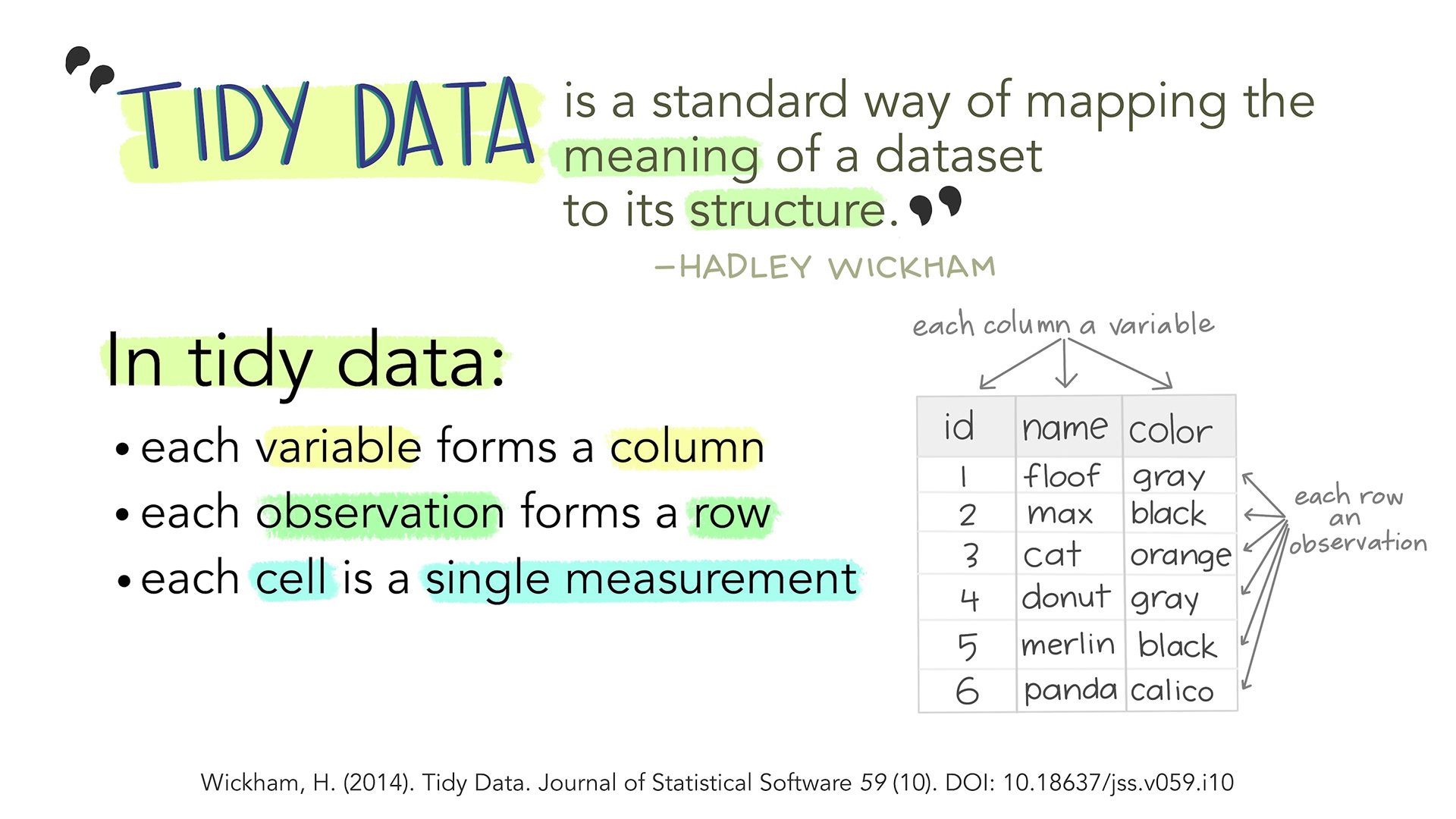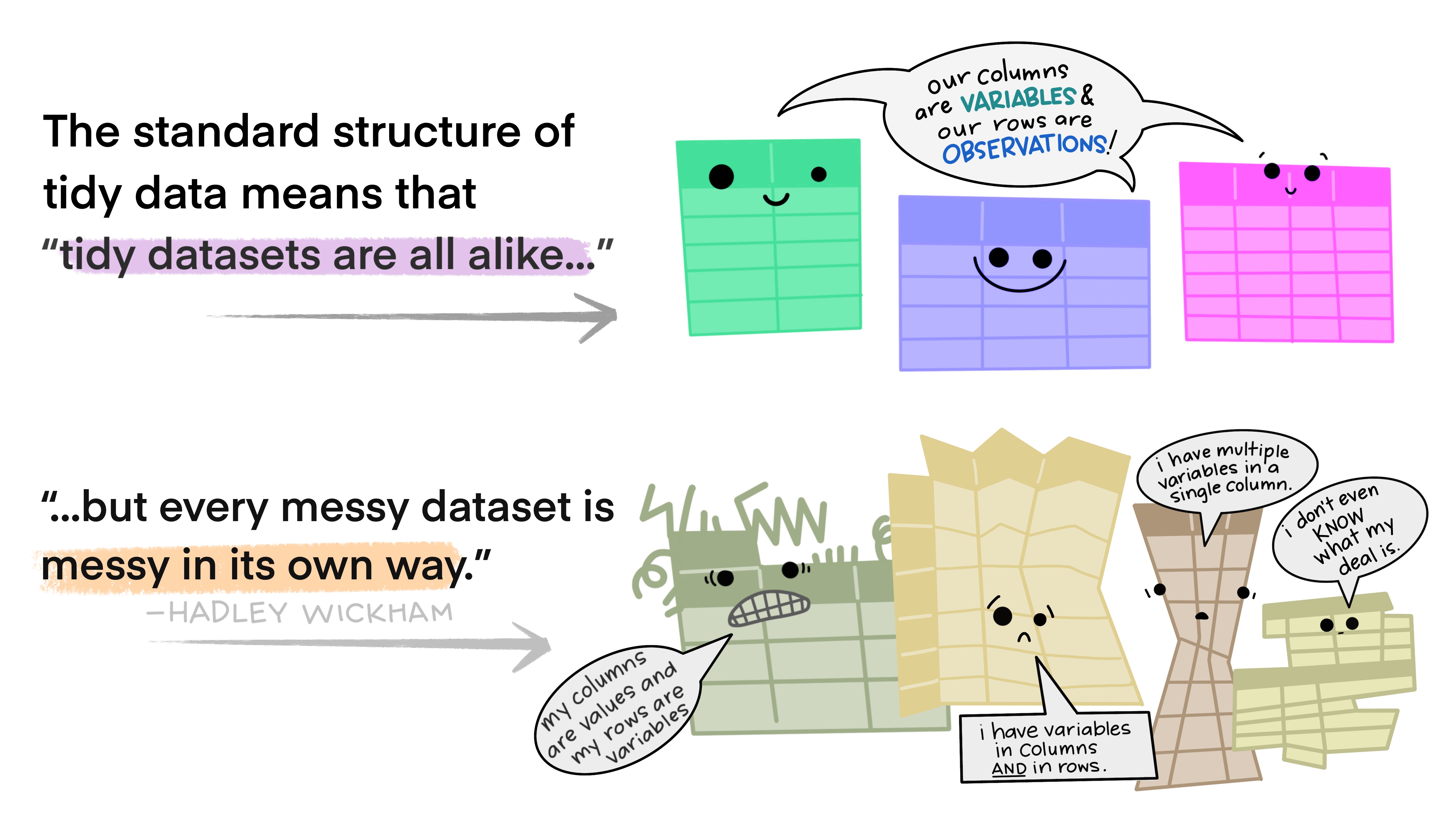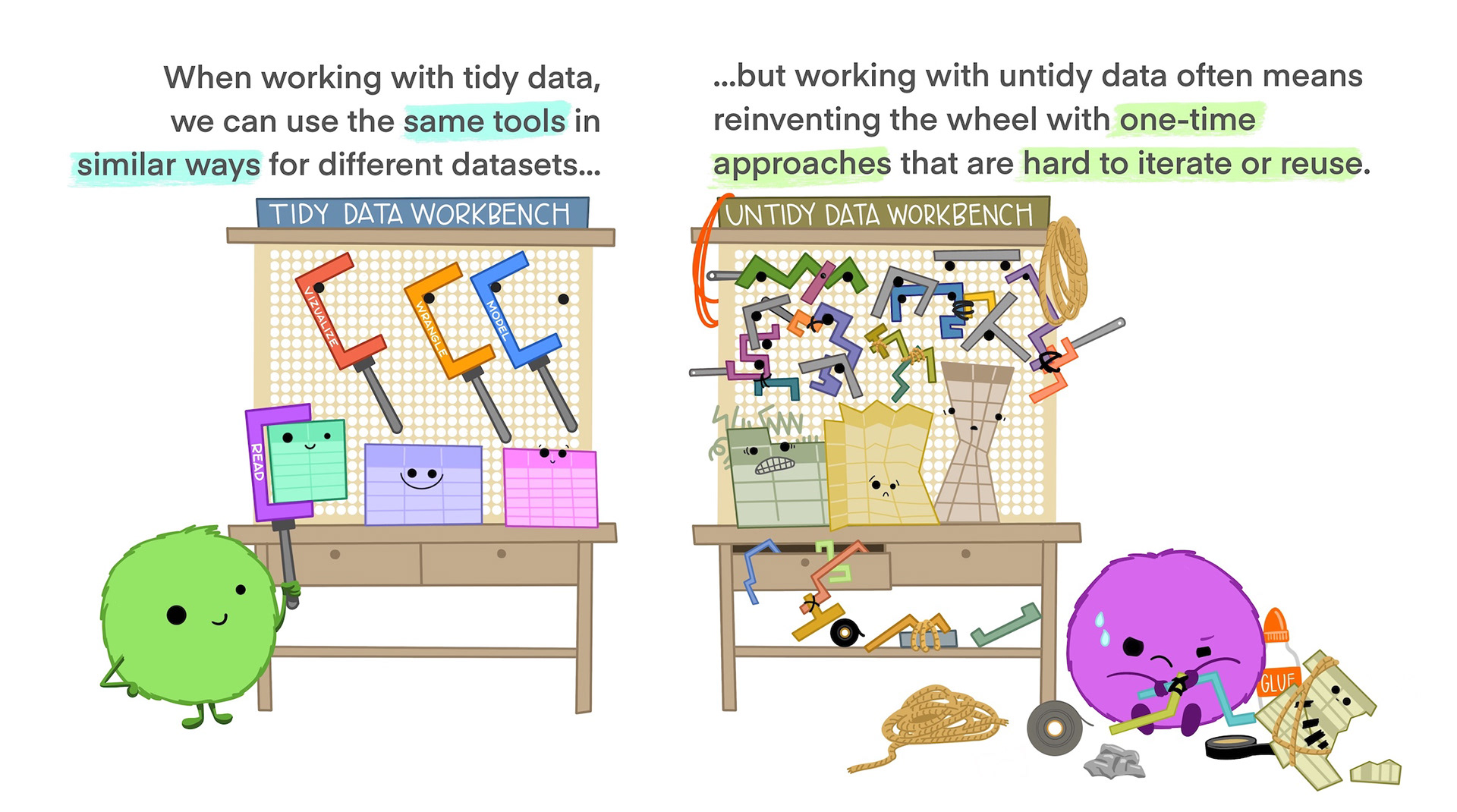| month | shelver | stacks_books | reference_books | bound_journals | unbound_journals |
|---|---|---|---|---|---|
| 1 | A | 0 | 0 | 337 | 0 |
| 1 | B | 81 | 12 | 0 | 0 |
| 2 | A | 0 | 0 | 325 | 2 |
| 2 | B | 62 | 13 | 0 | 0 |
| 3 | A | 0 | 8 | 258 | 0 |
| 3 | B | 138 | 8 | 5 | 0 |
| 4 | A | 0 | 0 | 72 | 0 |
| 4 | B | 70 | 12 | 0 | 0 |
R Community of Practice
Week 4
Learning Goals
- Define the concept of tidy data
- Define what is meant by long and wide data
- Understand the pros and cons of working with wide or long data.
- Use the
tidyrpackage to pivot a data frame from wide to long
The Data
Scenario: We want to visualize a small dataset of shelving statistics.
We’ll complete the following tasks:
- Pivot the data frame from wide to long using
tidyrpackage - Plot the data frame using what we learned about
ggplot2
What is Tidy Data 1?

Tidy Data is predictable 1

Tidy Data is more efficient 1

Why isn’t our data tidy?
How would we plot the data?
shelving_wide %>%
ggplot(mapping=aes(x=???, y=???)) +
geom_bar(stat="identity")
Wide vs long data
- long data
- data represented with minimum number of columns necessary, tidy data
- wide data
- Variables may be spread across multiple columns. Column names often represent variable values
Our Goal
| month | shelver | material_type | number_shelved |
|---|---|---|---|
| 1 | A | stacks_books | 0 |
| 1 | A | reference_books | 0 |
| 1 | A | bound_journals | 337 |
| 1 | A | unbound_journals | 0 |
| 1 | B | stacks_books | 81 |
| 1 | B | reference_books | 12 |
| 1 | B | bound_journals | 0 |
| 1 | B | unbound_journals | 0 |
| 2 | A | stacks_books | 0 |
| 2 | A | reference_books | 0 |
| 2 | A | bound_journals | 325 |
| 2 | A | unbound_journals | 2 |
| 2 | B | stacks_books | 62 |
| 2 | B | reference_books | 13 |
| 2 | B | bound_journals | 0 |
| 2 | B | unbound_journals | 0 |
| 3 | A | stacks_books | 0 |
| 3 | A | reference_books | 8 |
| 3 | A | bound_journals | 258 |
| 3 | A | unbound_journals | 0 |
| 3 | B | stacks_books | 138 |
| 3 | B | reference_books | 8 |
| 3 | B | bound_journals | 5 |
| 3 | B | unbound_journals | 0 |
| 4 | A | stacks_books | 0 |
| 4 | A | reference_books | 0 |
| 4 | A | bound_journals | 72 |
| 4 | A | unbound_journals | 0 |
| 4 | B | stacks_books | 70 |
| 4 | B | reference_books | 12 |
| 4 | B | bound_journals | 0 |
| 4 | B | unbound_journals | 0 |
pivot_longer()
To lengthen our data, we’ll use the pivot_longer() function from the tidyr package. There are four arguments we need to provide:
data- the data frame to lengthencols- the columns we want to pivot onnames_to- the name of a new column which will have our old column names as valuesvalues_to- the name of a new column which will hold the cell values of the pivoted columns
